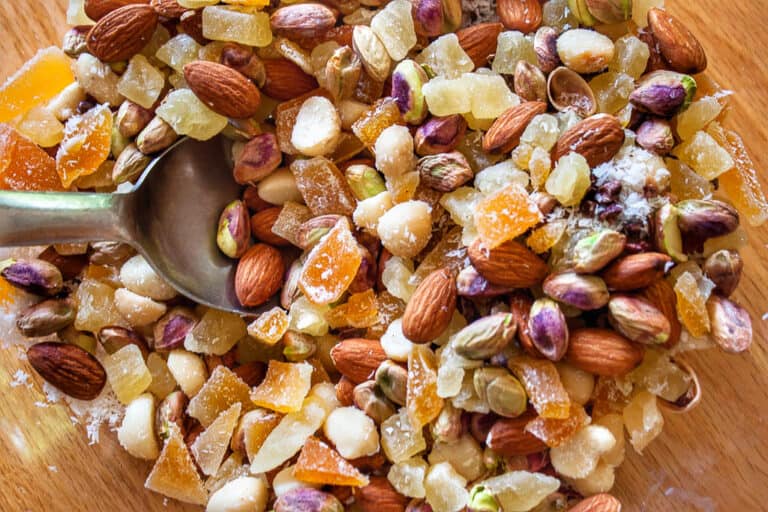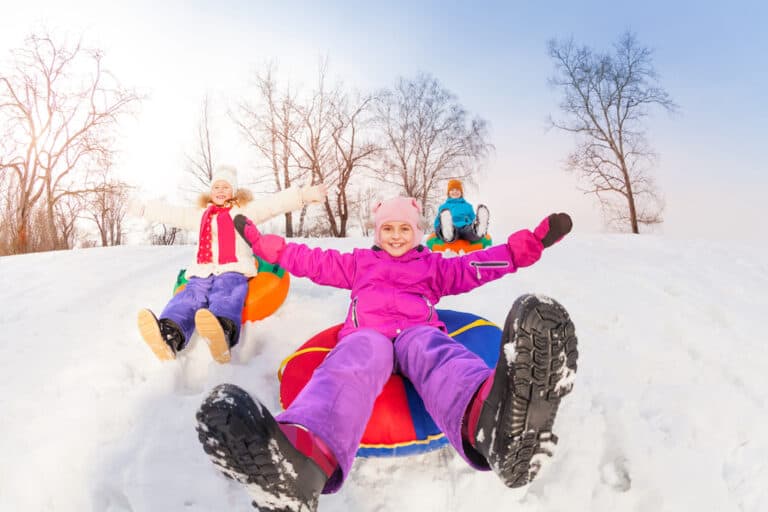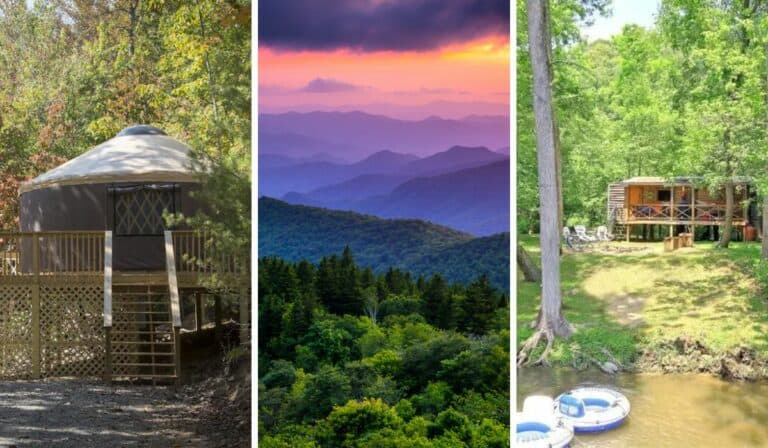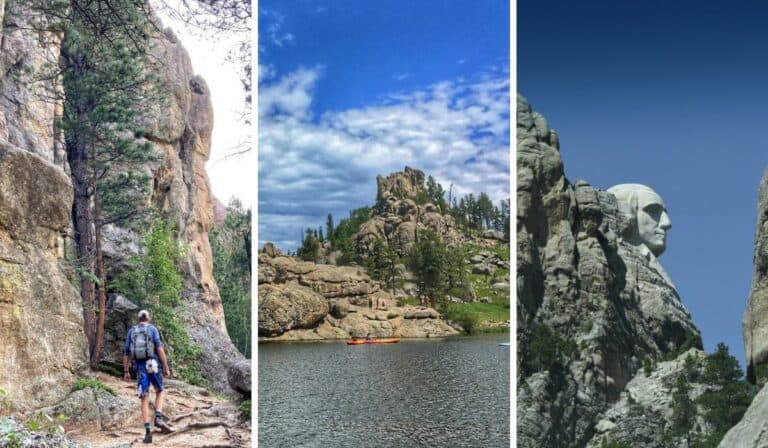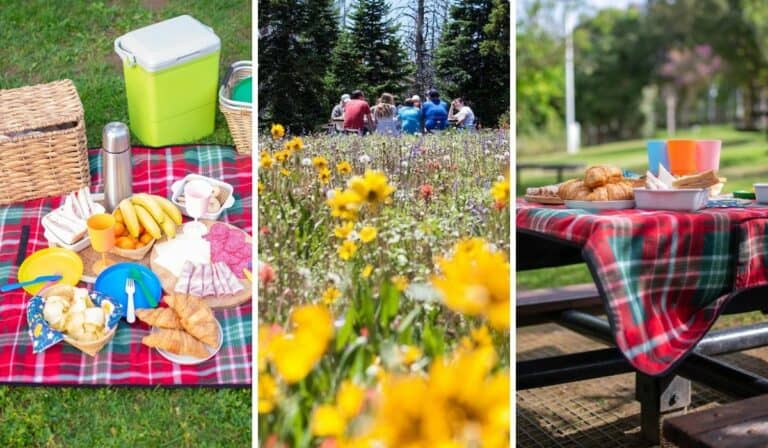9 Simple Hot Air Balloon Photography Tips
Note: Advertising is how we keep this site free for you to enjoy, and we earn a commission from affiliate links that may be included in this post. Thank you for supporting Back Road Ramblers!
I have always loved checking out hot air balloon festivals, even before I started playing around with photography.
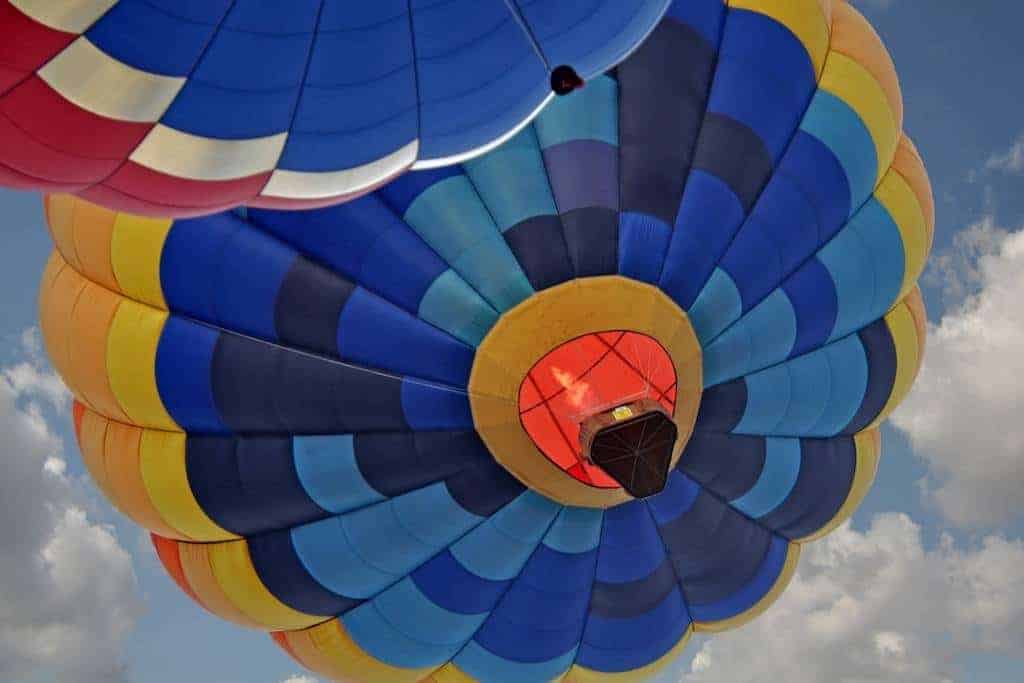
Bringing a camera to a balloon festival hooked me for life.
My first hot air balloon photoshoot was before smartphone photography and after the introduction of digital cameras. I remember framing shot after shot for hours on end. There were just so many colors, so many angles!
I knew little about photography at the time, but fortunately, hot air balloon festivals are very forgiving and I got enough amazing shots to keep up the momentum.
I have learned a lot since that first magical experience — about hot air balloon festivals and about photographing them.
I try and visit a new hot air balloon festival each year, and I always bring my camera. I’m not a professional photographer, but I do have a few helpful tips for hot air balloon photography, and I’d love to share them with you.
Want to plan a trip to a hot air balloon festival this year? Check this out: The Best Hot Air Balloon Festivals in the USA
Scope Out the Venue Before the Festival
When visiting a new hot air balloon festival, I try and arrive the afternoon before the festival begins so I can get the lay of the land and plan some shots.
I walk around the field, figure out where the sun will rise and set the following day, and make note of any cool features on or around the festival grounds.
If I can’t get to a spot early, I do my research on Instagram. I use hashtags, @ tags, and geotags to search for photos from previous balloon festivals in the same location. This is especially useful for visiting brand-new locations where I have no idea what to expect.
Start Your Day Early

Early morning on the field at a hot air balloon festival is electric, whether you’re taking photos or not.
Usually, a morning ascension is scheduled to happen when the wind is calm, which in most cases is just as the sun is rising over the horizon.
Not only will you have an opportunity to capture hot air balloons in both the blue and golden hours, but there are so many photo stories to tell as the balloon pilots and crew prepare for their flights.
Carry a Versatile Lens or Two
If you are shooting with a DSLR, you will want two lenses for the widest range of shots. The two that I use most when photographing hot air balloons are an 18 – 70mm and a 70-300mm. As for camera settings, I try and keep my ISO below 2000 — around 1600 in the early morning, and then lower and lower as the day wears on. My shutter speed is on the fast side — 1/160 or above for most shots, but again, it depends on the amount of light hitting the lens.
I’m also not above shooting with some automatic settings. With my Nikon D750, I often use night landscape mode with decent results. As I said, I’m not a professional photographer, and while I love learning, I’m not above using some automatic settings.
Smartphone cameras are already incredibly versatile, so my suggestion would be to play around with different angles and compositions. Avoid using your digital zoom. Instead, use your feet to move closer to your subject when you need to.
Photograph the Inflation Process
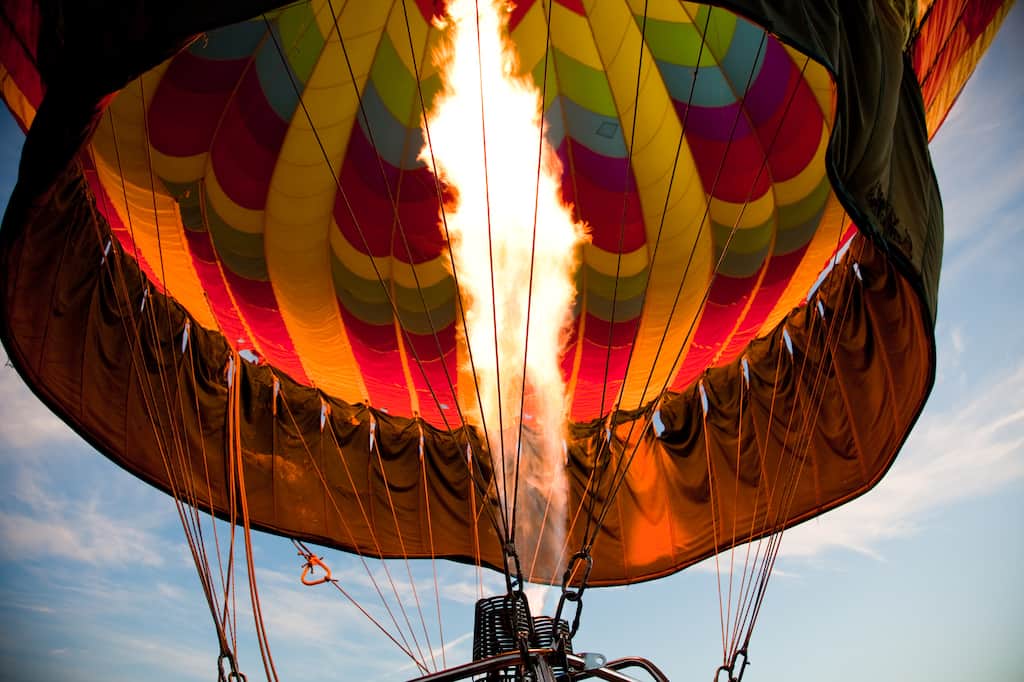
If you arrive at the field early enough, you will catch all the preparations for the morning ascension. This means that pilots and their crew will be busy preparing the colorful balloons for the flight and you will have lots of opportunities to capture them on the ground.
One of my favorite shots is to capture inside the balloons as they are being inflated.
The beginning of the process is a cold inflate, where the crew uses a fan to start filling the balloon with air. This is a spectacular opportunity to capture the inside of the balloon as it lays on its side and slowly grows bigger.
When the balloon has been inflated to a certain point using a fan, the crew switches to a hot inflate using the burners in the gondola. Take a few steps back and capture the flames, the inflating balloon, and the enamored crowd.
This is the most exciting time to be photographing a hot air balloon festival!
Capture Hot Air Balloons as Part of the Landscape
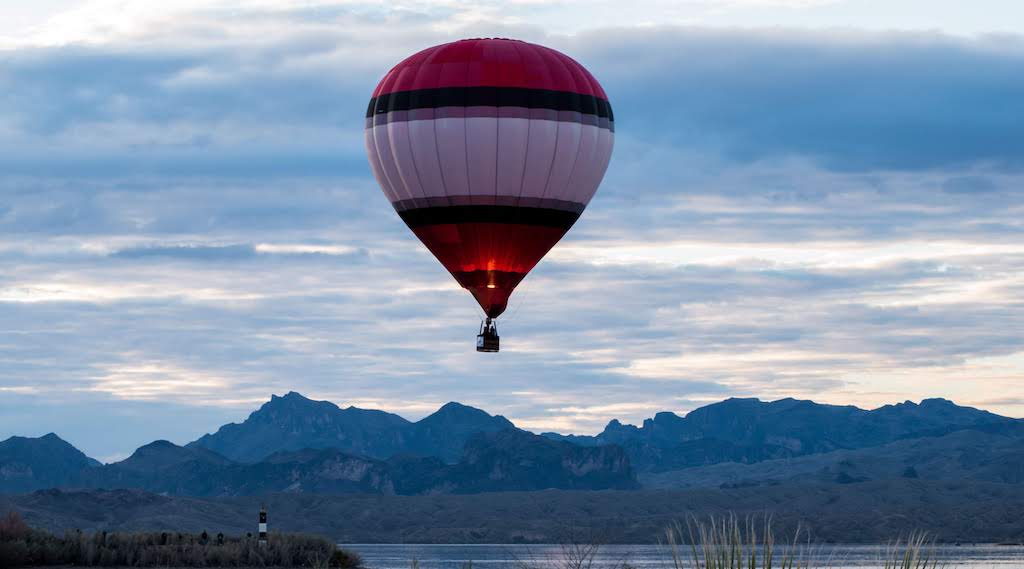
One of the things I love about hot air balloon festivals is how each festival highlights and embraces the natural landscape.
A balloon festival in Arizona is so different from a balloon festival in Vermont because the landscapes impact everything, from the direction the balloons take on the wind to where a photographer needs to stand to get the most dramatic photo.
I love trying to capture the unique features of whatever hot air balloon festival I visit. Here are some ideas to help you find a fun shot.
- Photograph hot air balloons over the water. Not all hot air balloon festivals happen near a cool water feature, but the ones that do provide a spectacular opportunity to capture reflection shots with one or multiple balloons. Some of my favorite hot air balloon festivals near great water features include the Havasu Balloon Festival & Fair in Lake Havasu City, Arizona, and the Quechee Balloon Festival in Quechee, Vermont. I’m sure there are lots more.
- Look for a mountain backdrop to photograph the balloons. Hot air balloons floating in front of a majestic mountain range make for a fabulous photo, especially during the morning ascension when the light hits the ballons just right. For incredible mountain photographs, check out the Teton Valley Balloon Rally or the Telluride Balloon Festival in Telluride, Colorado.
- When all else fails, look to the sky! When there are no outstanding landscape features, let the balloons themselves shine! Capture them against the blue sky for an amazing pop of color. I have attended hot air balloon festivals at city fairgrounds and public high schools. The landscape may not be spectacular, but the hot air balloons definitely are!
Get People in Your Hot Air Balloon Photos to Tell a Story

When taking hot air balloon photos, you can really liven up your shots by including people in the photo.
They may be spectators or crew members, on the ground or in the gondola, but a hot air balloon festival is a great place for all kinds of street photography and even portraits.
You’ll find that the morning and evening ascensions provide a totally different vibe, so be sure to check them both out.
I find the morning ascension to be more exciting. The sun is just coming up and there is electricity in the air. Morning spectators are up early and seem to be die-hard balloon fans.
In the evening, the vibe is more festive. People are eating and drinking, and there is often live music and kids running around. The lighting will be great during both the morning and evening ascensions, provided the weather cooperates.
Try Capturing the Abstract
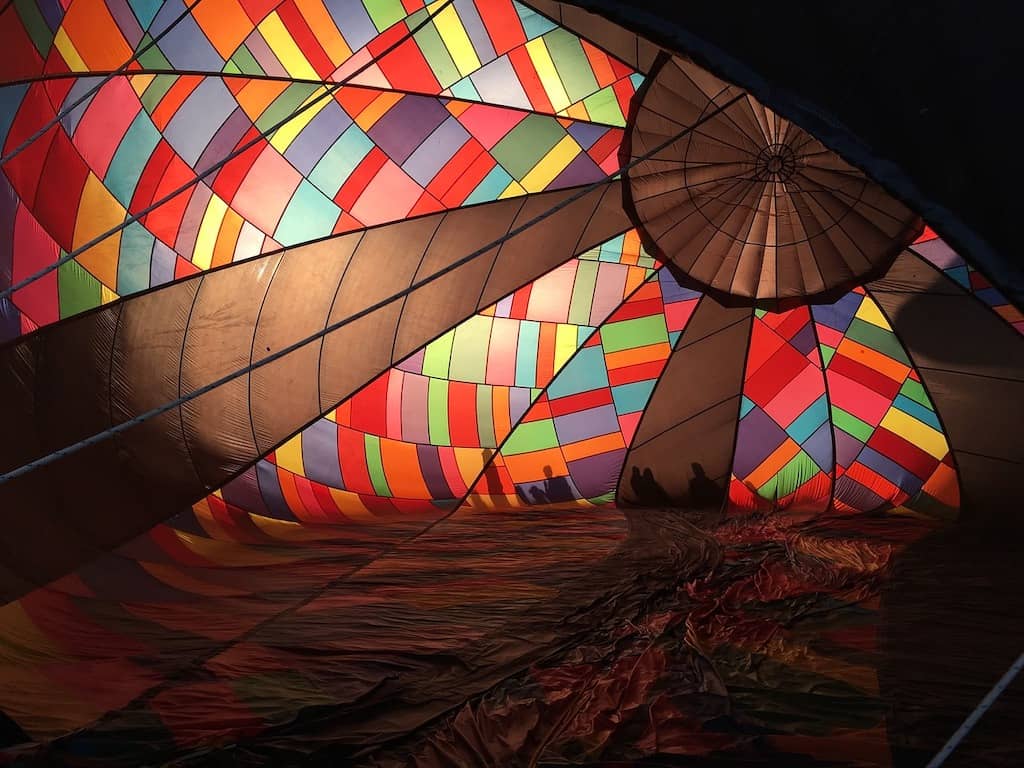
I mean, hot air balloons are already pretty abstract in our modern world, so it’s not too far of a stretch to capture the shapes and colors of a balloon festival in an abstract way.
Switch to your zoom lens and hunt for interesting compositions during inflation or when the balloons take to the sky. These photos may end up being some of your favorites!
Photograph the Balloon Festival from the Sky
I should follow my own advice, but I’m scared of heights and haven’t been able to overcome my fear and get into a balloon.
Still, you’ll have a great perspective of the other hot air balloons, the landscape, and the festival grounds. Yes, hot air balloon rides can be expensive, but a tethered ride won’t set you back too far, and think of the photos you’ll get!
Attend the Night Glow with Your Camera
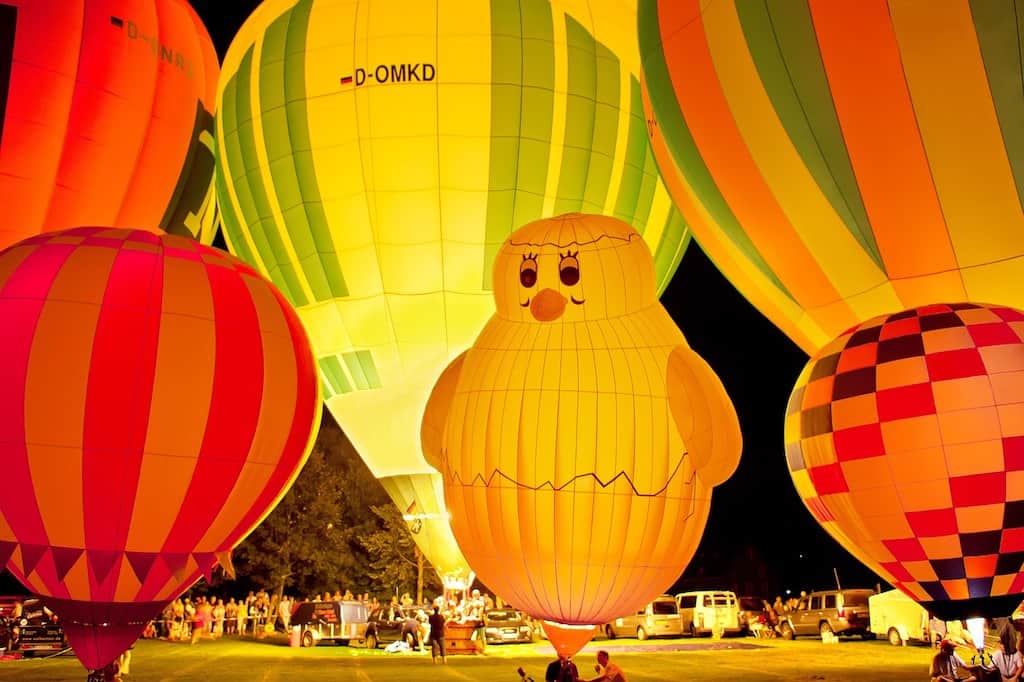
Most hot air balloon festivals host a nightly balloon glow, where the balloons are grounded and lit up so that spectators can walk around and take it all in.
A balloon glow provides a different perspective for photographers. Colors will be more muted, but the effect of the warm lights against the colorful balloons can be quite lovely.
I will often bring a tripod or monopod to photograph a balloon glow, and while I take fewer photographs, I appreciate the slow pace after a day of chasing balloons.
My DSLR settings are all over the place for this, but generally, I use an aperture of f4-f6, a shutter speed of at least 200, and an ISO of 1000-ish. I prefer a wide-angle lens for balloon glows, they are all quite close together.
Special Gear for Photographing Hot Air Balloon Festivals
Honestly, you can take some pretty amazing photos of hot air balloons with nothing but a smartphone and a good eye.
You can also invest in expensive lenses, filters, and other gear. I would consider myself a budget intermediate photographer. I love learning about photography, but I don’t have a lot of money to spend.
I do have a few pieces of photography gear that I find useful for schlepping around balloon festivals. In addition to my camera and lenses, here’s what I bring along.
- A monopod. It’s a walking stick that steadies my hand when I’m taking pictures. It’s not as sturdy as a tripod, but it’s super portable. I use a lightweight, retractable monopod and securely attach my camera to it before leaving the car.
- A polarizing filter. This is useful on bright days to make the blue sky and the colors of the balloons really pop.
- A lightweight bag for my extra lens, snacks, and a jacket. Current favorite camera bag? This Thule camera backpack. We use it for hiking too.
Follow us on social media!

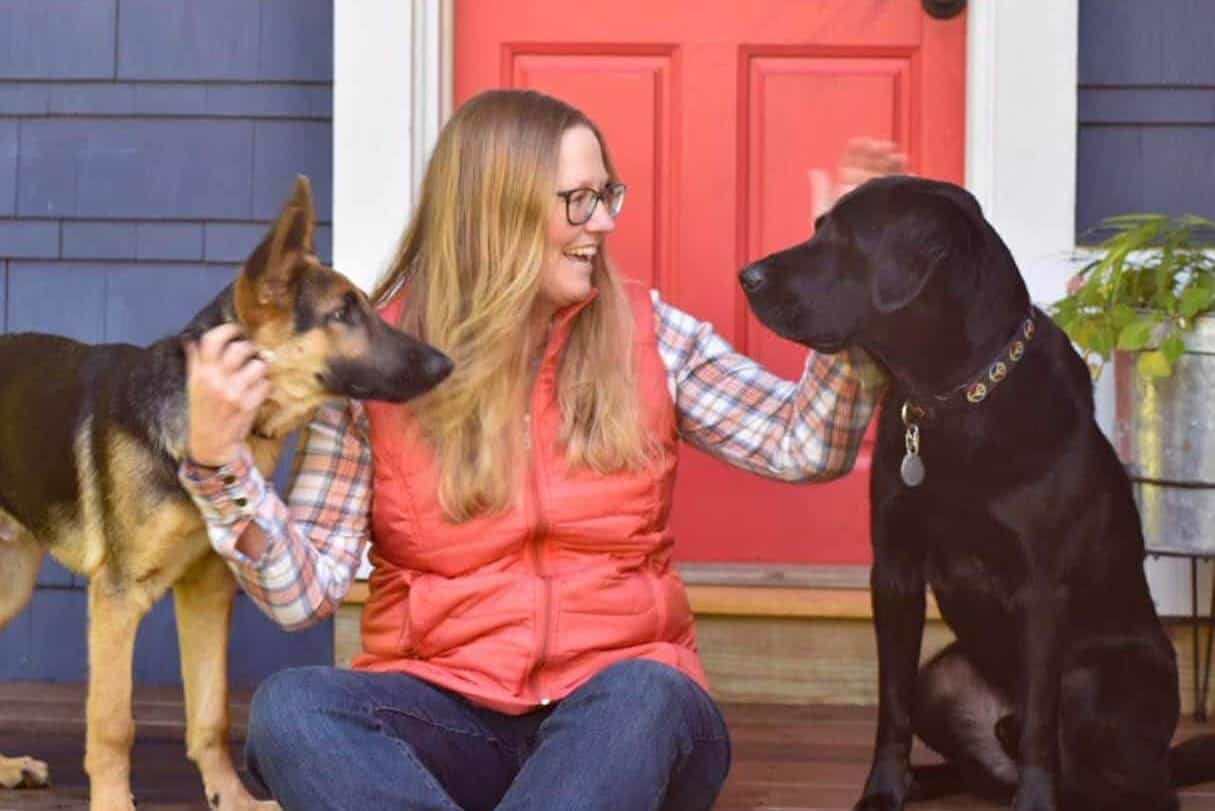
Tara Schatz is a freelance writer and travel blogger with a passion for outdoor adventures. She is the co-author of AMC’s Best Day Hikes in Vermont and currently blogs at Back Road Ramblers and Vermont Explored, where she shares travel tips, adventure destinations, and vacation ideas for the wanderer in everyone.

